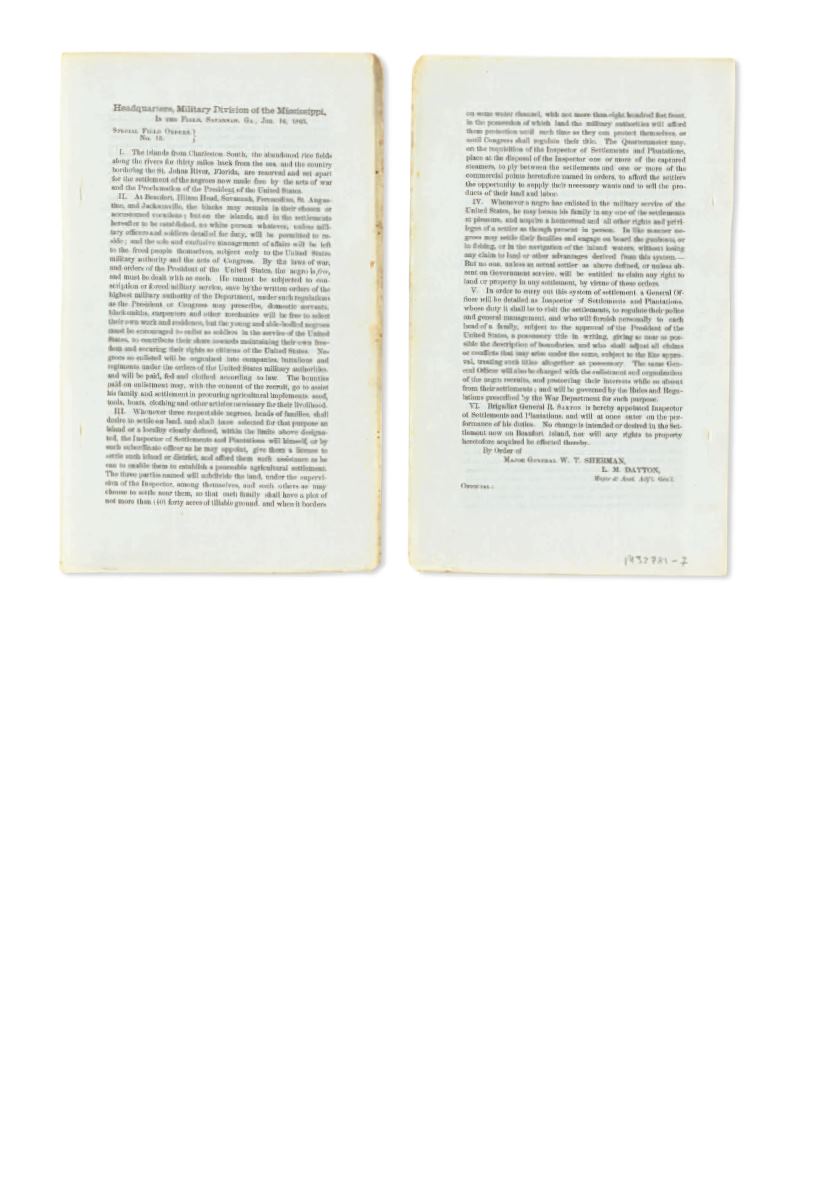

FORTY ACRES
354
●
(MILITARY—CIVIL WAR.) SHERMAN, WILLIAM T.
Special Field Order
No 15. Headquarters Military Division of the Mississippi.
8vo sheet, printed on
both sides; two neat punctures to the left margin, having been removed from a larger vol-
ume of orders.
“In the Field,” Savannah, GA, 16 January 1865
[3,000/5,000]
Sherman’s Special Field Order Number 15 specifically stated: “By the laws of war and orders of the
President of the United States, the Negro is free and must be dealt with as such.” It continued:
“Whenever three respectable Negroes, heads of families shall desire to settle on land, and shall have
selected for that purpose an island or a locality clearly defined. . . each family shall have a plot of not
more than forty (40) acres of tillable ground, and when it borders on some water channel, with not
more than eight hundred feet front, in the possession of which land, the military authorities will afford
them protection until such time that they can protect themselves, or until Congress shall regulate their
title.” The Freedman’s Bureau Act provided for the confiscation of 400,000 acres of land along the
Atlantic coast of South Carolina, Georgia, and Florida and the dividing of it into parcels of not more
than 40 acres, on which were to be settled approximately 18,000 freed slave families and other Blacks
then living in the area. Word of this quickly spread among the newly freed slaves, most of whom inter-
preted it to mean exactly what it sounded like. But both this order and the Freedman’s Bureau Act
were reversed by Andrew Johnson who succeeded Lincoln, leaving literally tens of thousands of newly
free blacks in a state of limbo, landless and jobless. This is treated with at length by W.E.B. Du Bois
in his Black Reconstruction.
355
●
(MILITARY—CIVIL WAR.) GRAFTON, CAPTAIN JOHN R.
Collection of
letters of a U.S. Colored Infantry Captain to his wife in Lawrence Kansas.
Twelve letters of various size (mostly 4to), nine with their original envelopes.
Vp, 1863-1865
[5,000/7,500]
354









